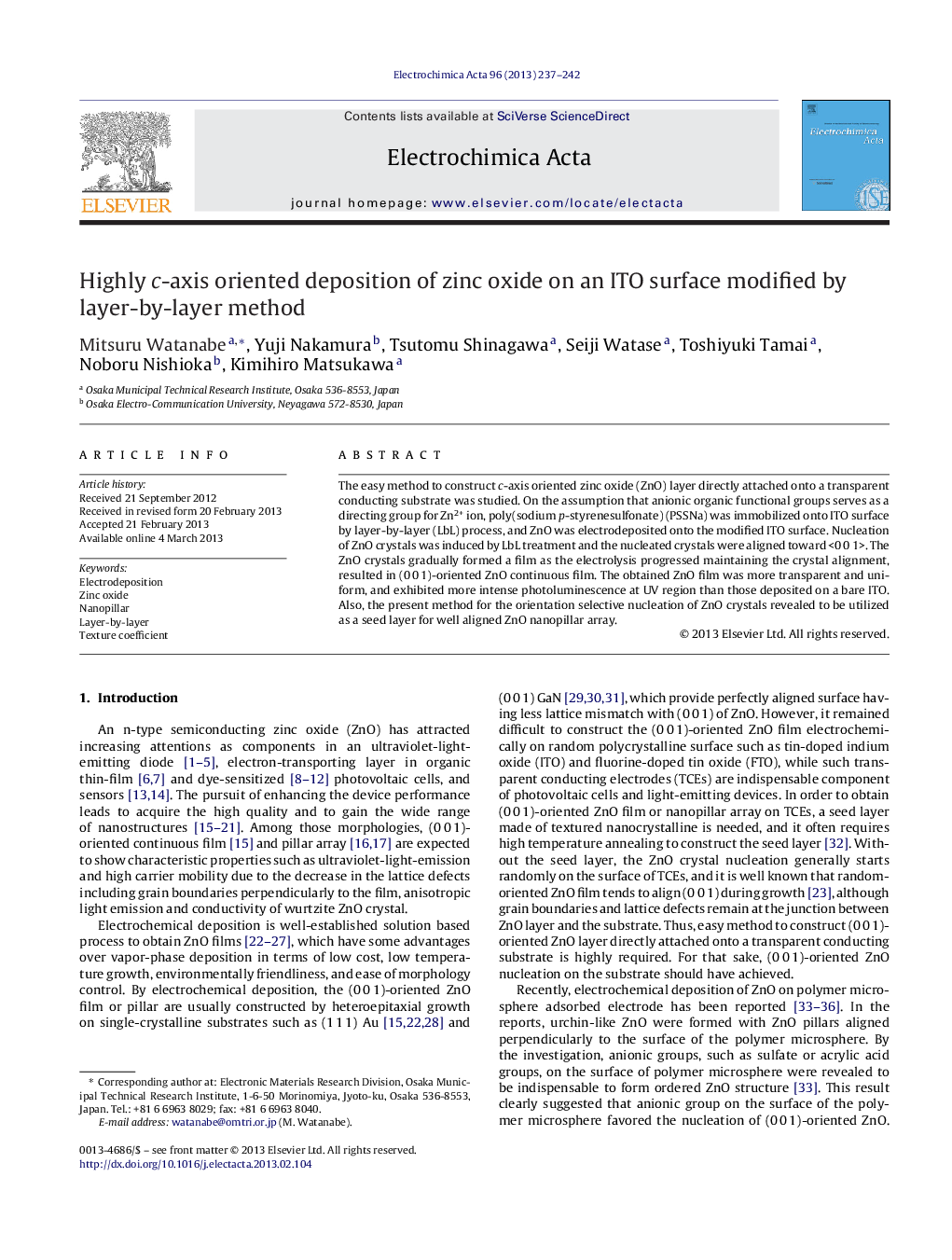| Article ID | Journal | Published Year | Pages | File Type |
|---|---|---|---|---|
| 186897 | Electrochimica Acta | 2013 | 6 Pages |
The easy method to construct c-axis oriented zinc oxide (ZnO) layer directly attached onto a transparent conducting substrate was studied. On the assumption that anionic organic functional groups serves as a directing group for Zn2+ ion, poly(sodium p-styrenesulfonate) (PSSNa) was immobilized onto ITO surface by layer-by-layer (LbL) process, and ZnO was electrodeposited onto the modified ITO surface. Nucleation of ZnO crystals was induced by LbL treatment and the nucleated crystals were aligned toward <0 0 1>. The ZnO crystals gradually formed a film as the electrolysis progressed maintaining the crystal alignment, resulted in (0 0 1)-oriented ZnO continuous film. The obtained ZnO film was more transparent and uniform, and exhibited more intense photoluminescence at UV region than those deposited on a bare ITO. Also, the present method for the orientation selective nucleation of ZnO crystals revealed to be utilized as a seed layer for well aligned ZnO nanopillar array.
Graphical abstractFigure optionsDownload full-size imageDownload as PowerPoint slideHighlights► Highly c-axis oriented ZnO crystals were nucleated on an LbL modified ITO. ► They formed a film as the electrolysis progressed maintaining the crystal alignment. ► The obtained c-axis oriented ZnO film was more transparent and uniform. ► Well aligned ZnO nanopillar array can be constructed on ITO using the present method. ► The method introduced here does not include vacuum or high temperature conditions.
